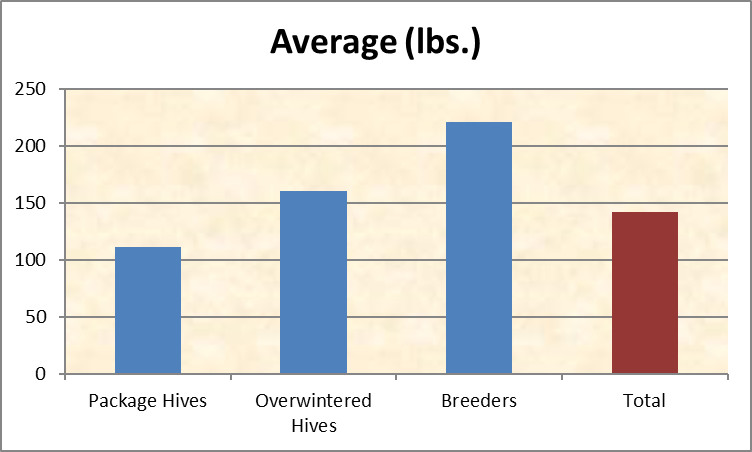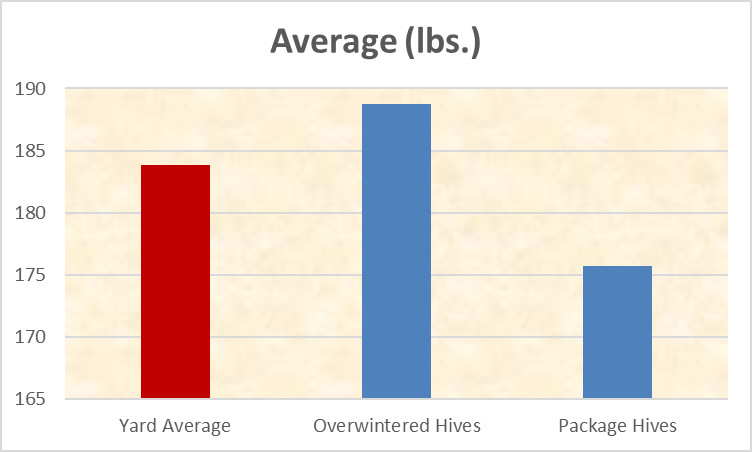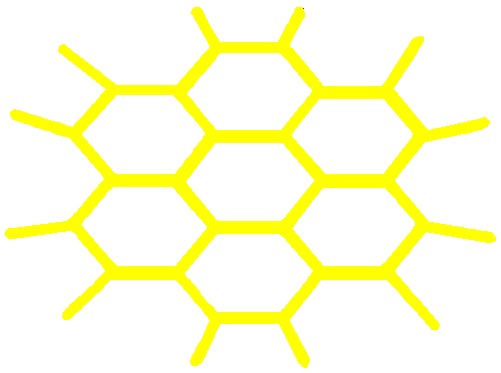
| Home | Queens | Honey Production | Employment | Contact Us | Research & Publications | Tours | Items For Sale | Links | FAQs |
In
2019, we
had a year that could only be described as a disaster.
In the spring, half of the hives were
dead. We ordered
New Zealand packages. Since
I had very little experience with
package hives, it seemed logical to run an experiment comparing package
hives
to overwintered hives in terms of honey production. We went into the
honey
season with half of our hives being overwintered hives and half of them
being
package hives. We
segregated the hives
as much as we could so that if we were bringing in any diseases, they
would be
contained. We ran 4
beeyards with
package colonies, 4 beeyards with overwintered colonies and 1 beeyard
with about 1/3 package colonies and 2/3 overwintered colonies. We fed the package
colonies, but
did not feed most of the overwintered colonies.
We skimmed bees from the overwintered colonies to stock
our cell builder
hives and mating nucs to raise queens. We requeened all of the package
hives
during the canola season by finding and killing the queens and then
replacing
them with a new queen the next day.
It
ensured there was not much down time between when the queen stopped
laying and
the new one started again.
Honey Production
2019 was an odd summer. It rained on and off through most of the canola season and so the bees only had about 50% flying time compared to usual and were robbing through most of the summer. The honey crop overall reflected that. It seemed much more like a New Zealand summer than a Saskatchewan summer. Therefore, I wasn’t sure that Saskatchewan bees would outperform the New Zealand bees in those climatic conditions. However, they still did. The package hives that we bought to survive the winter losses just didn't produce like the overwintered hives did. 111 lbs. versus 161 lbs versus 221 lbs from the breeders. Those breeders are 2 year old queens.
 |
I realize that it could be argued that by putting the packages in separate yards, those yards just had less access or flying time and the separate locations biased the experiment against the package hives. That's why I've also attached a separate chart from the yard that had both package hives and overwintered hives. The overwintered hives still outproduced the package colonies.
 |
Perhaps
what surprised me the most was the noticeable difference in brood
pattern. As we were going through the package hives
killing queens to replace them with New Zealand stock, I had one hive
in each
of 2 yards that the brood pattern stuck out as so different that I
stopped to
read the record card before I killed the queen.
In both situations, they had already been requeened with our stock
earlier in the spring when their New Zealand queen was lost.
What was the noticeable difference that
stopped me in my tracks? The New Zealand
bees had been annoying me with their tendency to have 2 – 4 cm of honey
rimming
the brood underneath the excluder. They
were restricting the queens laying room by not moving the honey up into
the
honey supers and leaning towards swarming tendencies. Those 2
hives that we had already requeened
had moved their honey above the excluder and had brood right up to the
bottom
of the top bar right across the hive.
The conclusion was that genetic stock also makes a difference as to how
well honeybees go through queen
excluders.
Clearly over the last decades, we had bred a stock that went through
queen excluders with little to no problems without even realizing that
we were
doing it. I assume those hives that did
not go through queen excluders either did not produce as much and
weren’t bred
from or they swarmed and weren’t bred from.
| I'm
thankful that we could order packages when we had such a devastating
winter loss, but I would always choose our overwintered stock over
packages if I had the choice. |
 Revised:
January 25, 2020.
Copyright © 2002 Pedersen Apiaries. All rights reserved. Original Design & Graphics by Karen Pedersen Photographic images are under copyright and used with permission of John Pedersen or Karen Pedersen |